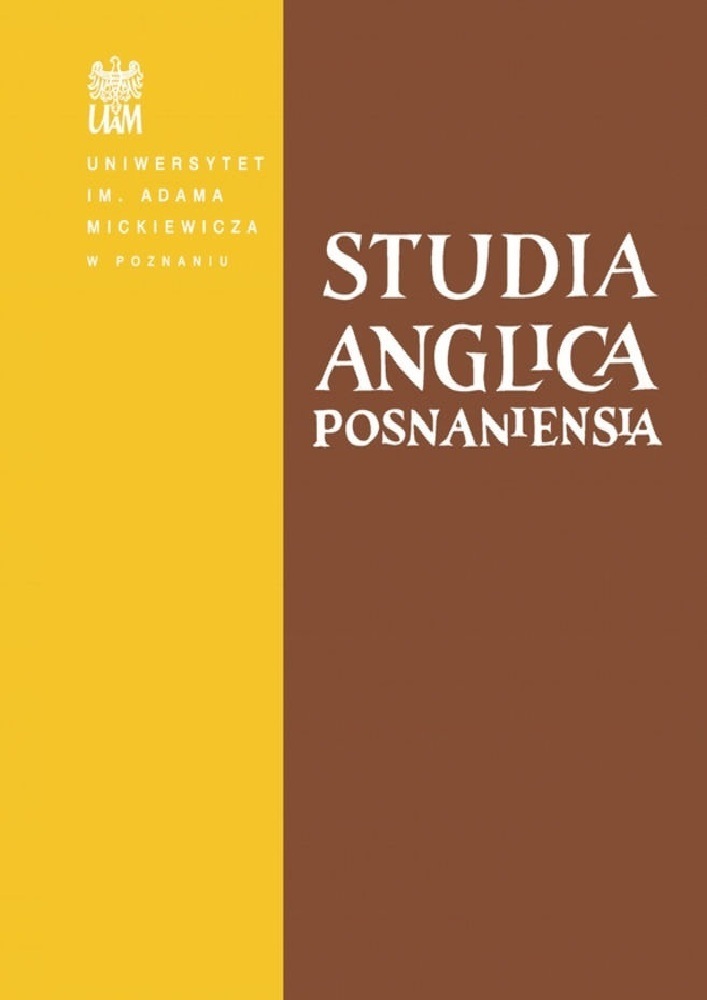Abstract
This paper discusses glyphs of the 2-shaped or “round” allograph of the grapheme <r> with a tag protruding from the lower part of the stem, asking whether their distribution in a corpus of some 600 late Middle English texts can be meaningfully related to these texts’ localisation in A Linguistic Atlas of Late Mediaeval English. It discusses what localisation expresses, and uses regression modelling to show that there is no co-variation between the texts’ paleography and their orthography, although there is a measure of correlation between them. The evidence in favour is that the quantitative analysis identifies localisation in northings as a predictor of the occurrence of the tagged form of the allograph, which occurs at a higher frequency in texts localised below the Midlands line at c. 300 northings. The evidence against is the form’s scattered distribution according to the localisation variable where co-variation would imply a more clear-cut concentration of points, and also the moderate success at explaining the form’s distribution by means of variables known to explain orthographic variation.
References
Benskin, Michael. 1982. The letters <þ> and in later Middle English, and some related matters. Journal of the Society of Archivists 7(1). 13–30. DOI: 10.1080/00379818209514199
Bischoff, Bernhard. 1990. Latin palaeography: Antiquity and the Middle Ages. Cambridge: Cambridge University Press. DOI: 10.1017/CBO9780511809927
Blake, Norman F. & Jacob Thaisen. 2004. Spelling’s significance for textual studies. Nordic Journal of English Studies 3. 93–108.
Brown, Michelle P. 1990. A guide to western historical scripts from Antiquity to 1600. London: The British Library.
Derolez, Albert. 2003. The palaeography of Gothic manuscript books: From the twelfth to the early sixteenth century. Cambridge: Cambridge University Press.
Doyle, Anthony Ian. 1994. A palaeographer’s view. In Margaret Laing & Keith Williamson (eds.), Speaking in our tongues: Medieval dialectology and related disciplines, 93–97. Cambridge: Brewer.
Hector, Leonard C. 1966. The handwriting of English documents. London: Edward Arnold.
Horvath, Barbara M. & Ronald J. Horvath. 1997. The geolinguistics of a sound change in progress: /l/ vocalization in Australia. University of Pennsylvania Working Papers in Linguistics 4(1). 109–124.
Hothorn, Torsten & Achim Zeileis. 2018. A toolkit for recursive partytioning, version 1.2–1. https://cran.r-project.org/web/packages/partykit/partykit.pdf (accessed 25 May 2018).
Jenkinson, Hilary. 1915. Palaeography and the practical study of court hand. Cambridge: Cambridge University Press.
Johnson, Charles & Hilary Jenkinson. 1914. English court hand, A.D. 1066 to 1500. Oxford: Clarendon Press.
Laing, Margaret. 1989. Linguistic profiles and textual criticism: The translations by Richard Misyn of Rolle’s Incendium Amoris and Emendatio Vitae. In Margaret Laing (ed.), Middle English dialectology: Essays on some principles and problems, 188–223. Aberdeen: Aberdeen University Press.
McIntosh, Angus. 1974. Towards an inventory of Middle English scribes. Neuphilologische Mitteilungen 75(4). 602–624.
McIntosh, Angus. 1975. Scribal profiles from Middle English texts. Neuphilologische Mitteilungen 76(2). 218–235.
McIntosh, Angus, Michael L. Samuels & Michael Benskin (eds.). 1986. A linguistic atlas of Late Mediaeval English. Aberdeen: Aberdeen University Press.
Millett, Bella. 2012. Scribal geography. In Elaine Treharne, Orietta Da Rold & Mary Swan (eds.), New medieval literatures 13, 183–197. Turnhout: Brepols.
Parkes, Malcolm B. 2008a. Handwriting in English books. In Nigel J. Morgan & Rodney M. Thomson (eds.), The Cambridge history of the book in Britain. Vol. 2: 1100–1400, 110–135. Cambridge: Cambridge University Press.
Parkes, Malcolm B. 2008b. Their hands before our eyes: A closer look at scribes. Aldershot: Ashgate.
Robinson, Peter M. W. & Elizabeth Solopova. 1993. Guidelines for transcription of the manuscripts of the Wife of Bath’s Prologue. In Norman F. Blake & Peter M. W. Robinson (eds.), The Canterbury Tales Project occasional papers volume I, 19–52. Oxford: Office for Humanities Communication
Stenroos, Merja, Martti Mäkinen, Simon Horobin & Jeremy Smith (compilers). 2011. The Middle English grammar corpus, version 2011.1. Available at https://www.uis.no/mest [accessed 3rd July 2016].
Thaisen, Jacob. 2011. Adam Pinkhurst’s short and long forms. In Jacob Thaisen & Hanna Rutkowska (eds.), Scribes, printers, and the accidentals of their texts, 73–90. Frankfurt: Peter Lang.
Thaisen, Jacob. 2017. Secretary letter-shapes in County Durham. Folia Linguistica Historica 38. 263–280. DOI: 10.1515/flih-2017-0009
Trudgill, Peter. 1974. Linguistic change and diffusion: Description and explanation in sociolinguistic dialect geography. Language in Society 3(2). 215–246. DOI: 10.1017/S0047404500004358
Varila, Mari-Liisa. 2014. Graphetic variation within one scribal hand as evidence on manuscript production. Studia Neophilologica 86s1. 157–170. DOI: 10.1080/00393274.2013.834107
